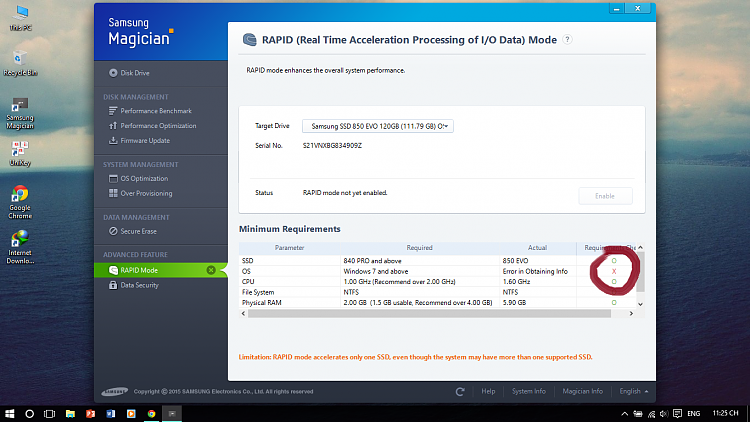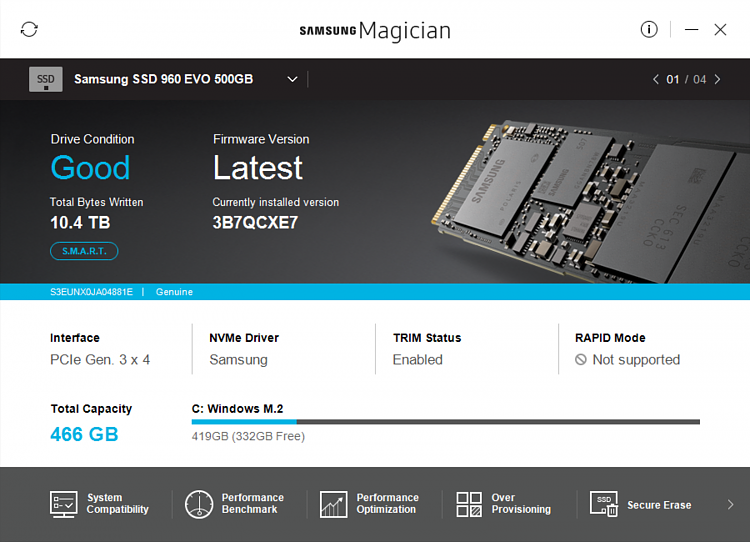
At this point it seems its this SSD is too modern for this model of laptop. What's the goal? TO use the SSD in this Dell Inspiron. At this point I added the drive back into the Dell Inspirion (removing the mechanical drive) where I loaded a setup iso from Ubuntoo and Minto (yes both Linux based operating systems) where the SSD was not seen but either installer. You may lose some support with the MBR partition table on Windows 10. I made it bootable for modern operating systems. How to convert a Windows installation from Legacy BIOS to UEFI and the partition. I was able to "initailize" the SSD! After all this I was happy to see the drive is fully detected. However, when I try to get details using Samsung Magician it reports N/A for most items like Drive. I ended up using the disk management tools under that same Windows 10 i5 PC. 2 SSD NVMe 10Gbps USB Type C Enclosure FS. I have created an Windows 10 install USB to doe a fresh install but windows does not see/detect the drive.-edit-I was able to install windows by loading the F6 drivers for Intel Rapid Storage. It's the Samsung 950 PRO with the PCIe connection and NVMe support.

I was successful in seeing the drive under the both pieces of Samsung software (magician and the migration tool) but only when I plugged the drive into the serial ata ports on the motherboard, not using my Vantec SATA enclosure. For my recently bought E5570 Latitude I bought an new/bigger/faster SSD. I tried the same procedure on a modern i5 PC with Windows 10. I used a USB 3 Vantec SATA enclosure drive with the Samsung SSD loaded. Sadly the Samsung Magician is not supported under Windows Vista. I did use the Samsung migration tool which did not detect the drive under Windows Vista. The Dell Inspiron Laptop has a dualboot of Windows Vista and Ubuuto.

I missed some important details as this was a late night post.


 0 kommentar(er)
0 kommentar(er)
